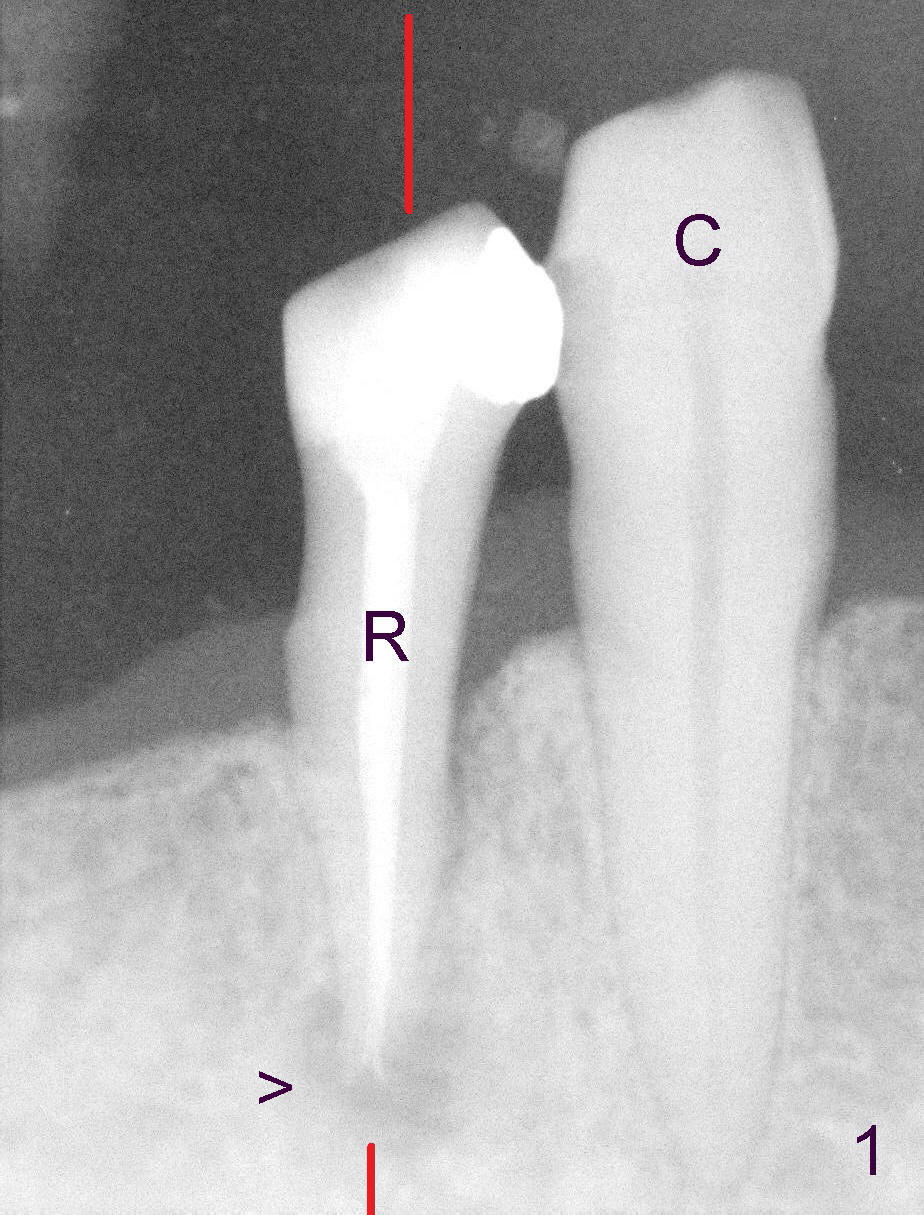
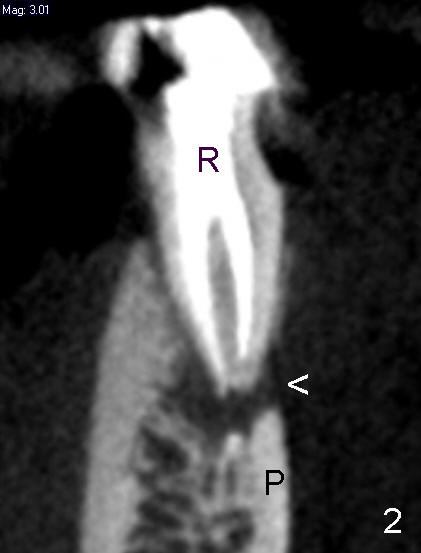
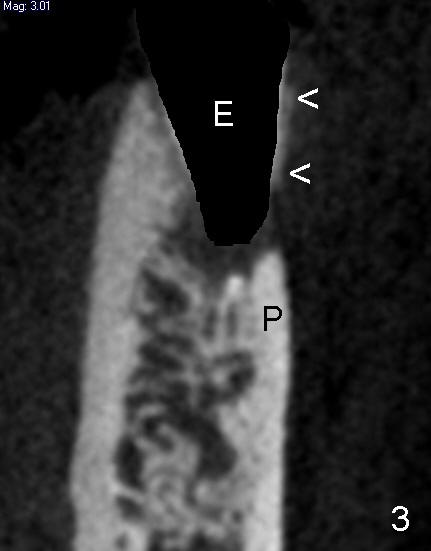
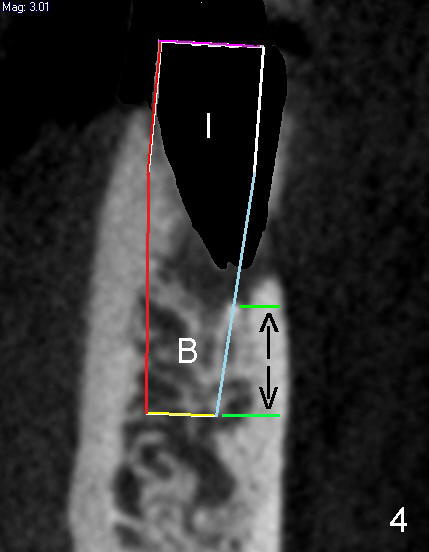
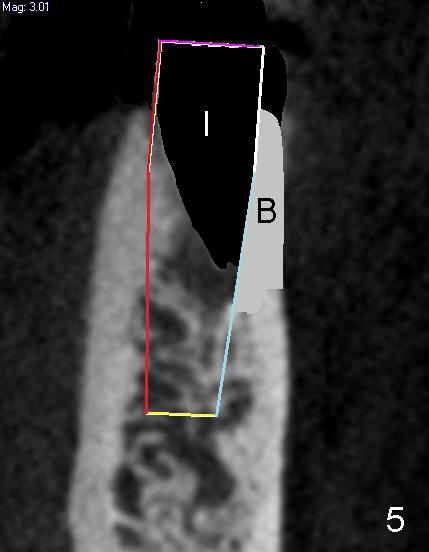
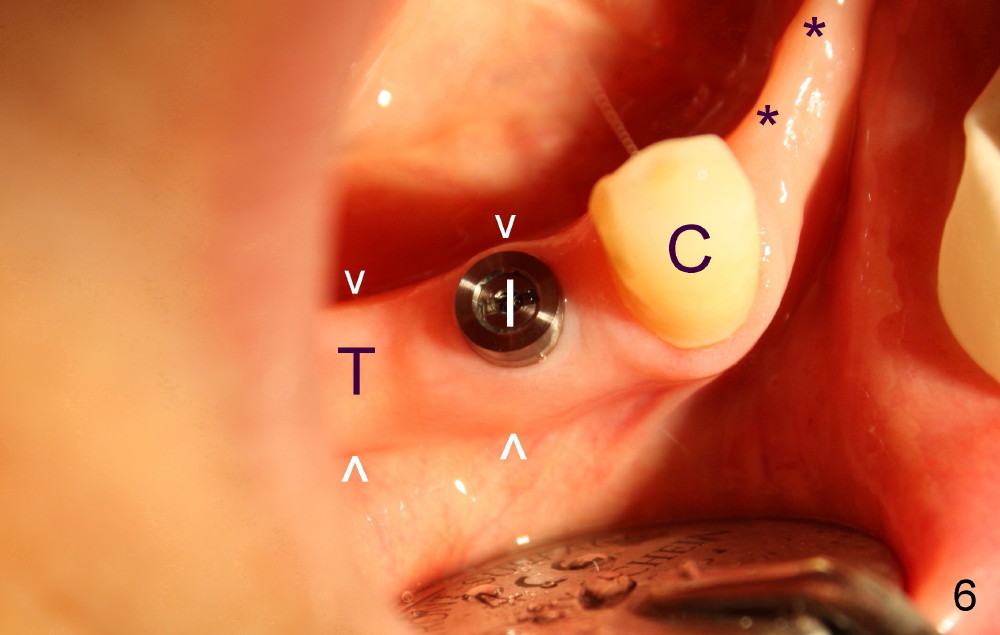
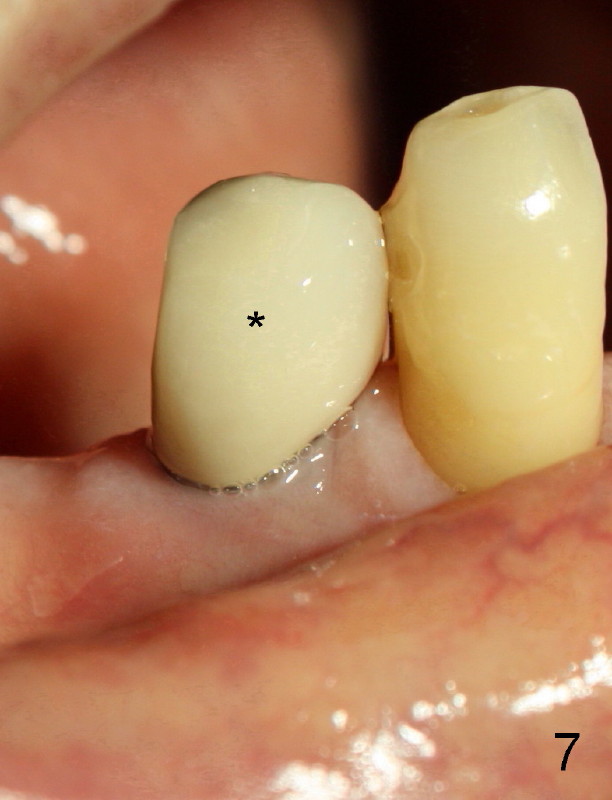
 |
 |
 |
 |
 |
 |
 |
|
Immediate Implant
Shrinkage of bone and gums occurs quickly after extraction of tooth with severe infection. It can be prevented by placement of implant immediately or shortly after extraction. Mrs. Li has an abscess (Fig.1 >) in spite of root canal (R). The tooth is so loose that it can not support partial denture. Let us make a CT section through the red line to see how severe the infection is.
The root tip infection has eroded the bone plate on one side of the tooth (Fig.2 P) and made a hole through (<).
The tooth is extracted (Fig.3 E; in illustration). The top part of the bone plate is so skinny (<). To prevent it from collapsing after extraction, an implant is placed immediately (Fig.4 I). To gain stability, the implant is buried deeper than the socket, i.e., into the non-infected solid bone (B). It is expected that new bone (Fig.5 B) will form to fill the space between the thin plate and implant and the hole mentioned above. The implant will be stronger.
Fig.6 shows the implant 3.5 months after placement (I). The thickness of the gums surrounding the implant (between <) is the same as that of a canine tooth (C) and wider than that of the neighboring missing tooth (T). The thin gums in the missing teeth in front is the most striking. It is extremely difficult to fix the lost bone.
Very soon Mrs. Li got a new tooth (Fig.7 *) and keeps using her old, but dearly lower partial denture. The patient has found that this implant tooth is very solid and stable. Recently she visited China and ate everything she wanted to.
Xin Wei, DDS, PhD, MS 1st edition 08/26/2012, last revision 12/18/2012